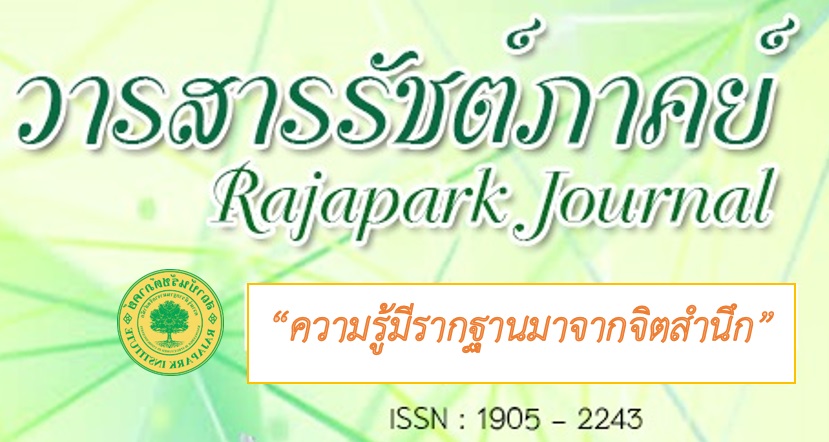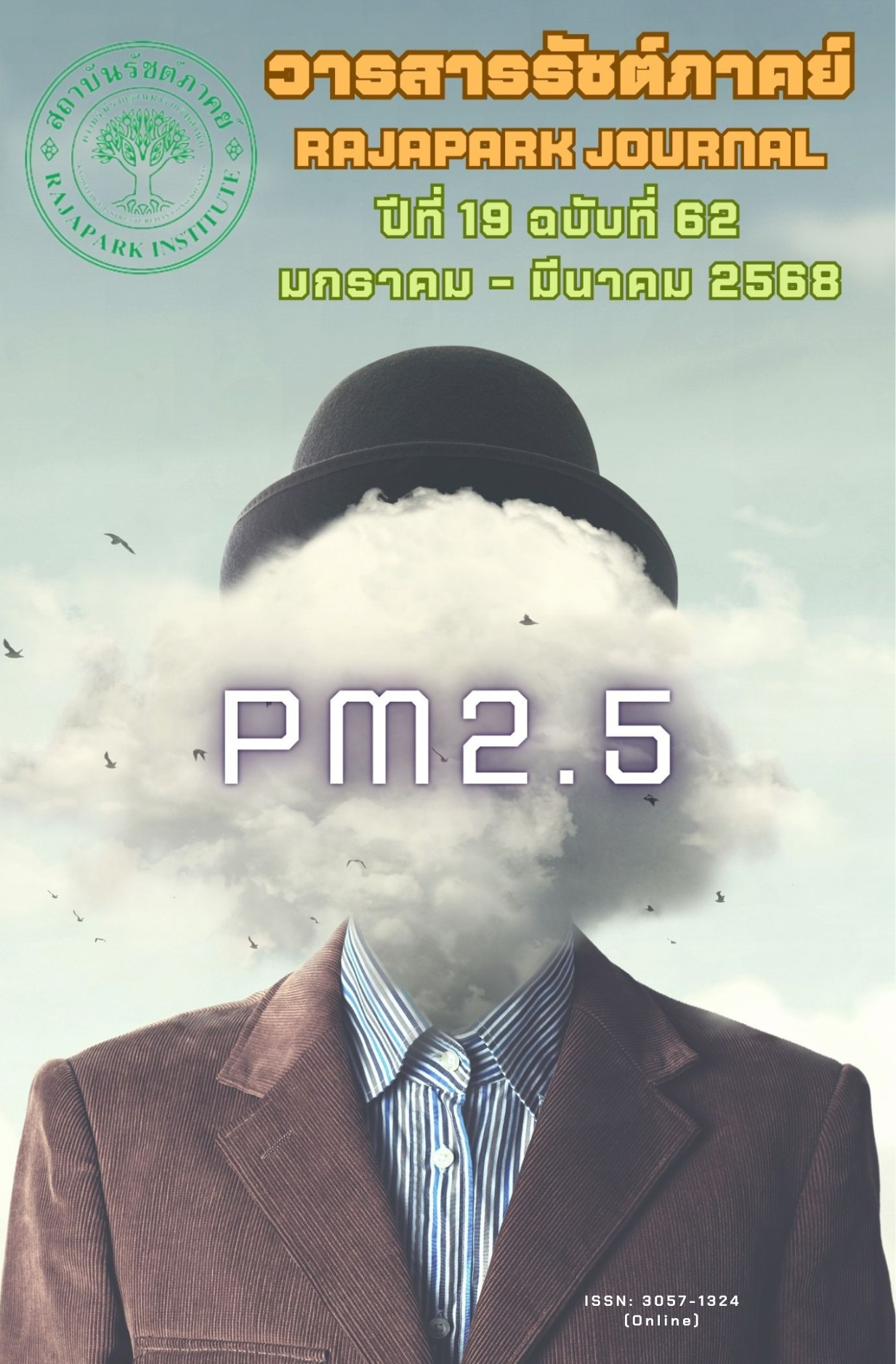The Impact of Internationalization Strategies on International Students’ Satisfaction and Career Paths: An Empirical Study of Provincial Public Universities in Shandong, China
Main Article Content
บทคัดย่อ
This study examines the impact of provincial public universities' internationalization strategies on international students' satisfaction and career paths, with a focus on mediating effects of student engagement, equity, and well-being. Through a survey of international students from five leading universities in Shandong Province, China, this study applies structural equation modeling to verify the hypotheses. The findings revealed that the internationalization strategy significantly influences students' engagement (coefficient = 0.612), equity (coefficient = 0.686), and well-being (coefficient = 0.714). Student engagement demonstrated crucial mediating effects, accounting for 15.707% of the total effect on satisfaction, while equity and well-being contributed 23.308% and 22.056% respectively. The results confirmed that the internationalization strategy of higher education institutions (HEIs) positively influences international students' overall experience and development. The implications suggest that HEIs should enhance their internationalization strategies by focusing on resource integration, career guidance services, and creating an inclusive campus environment to improve both the educational experience and career development of international students.
Article Details

อนุญาตภายใต้เงื่อนไข Creative Commons Attribution-NonCommercial-NoDerivatives 4.0 International License.
ทัศนะและความคิดเห็นที่ปรากฏในวารสาร ถือเป็นความรับผิดชอบของผู้เขียนบทความนั้น และไม่ถือเป็นทัศนะและความรับผิดชอบของกองบรรณาธิการ
เอกสารอ้างอิง
Calvert, C. A. (2021). Transforming student career paths into a project to increase engagement in a project management course. Journal of Education for Business, 96(2), 1-11. DOI:10.1080/08832323.2020.1860872
Canaj, K., Nimani, A., Canaj, B., & Spahija, D. (2022). Management and internationalization of research strategies in higher education institutions as a basis of economic well-being. Corporate and Business Strategy Review, 3(2), 221-229. DOI:10.22495/cbsrv3i2siart3
Cummins, R. A., Eckersley, R., Pallant, J., Van Vugt, J., & Misajon, R. (2003). Developing a national index of subjective well-being: the Australian unity wellbeing index. Social Indicators Research, 64, 159-190. http://dx.doi.org/10.1023/A:1024704320683
De Wit, H., & Altbach, P. G. (2021). Internationalization in higher education: Global trends and recommendations for its future. Policy Reviews in Higher Education, 5(1), 28-46. https://doi.org/10.1080/23322969.2020.1820898
Dong, S. (2019). The effects of first-generation status on student engagement and outcomes at liberal arts colleges. Journal of College Student Development, 60(1), 17-34. DOI:10.1353/csd.2019.0001
Fomicheva, T. V. (2020). To the operationalization of the concept of “sociocultural values” in the framework of the world values survey project. Social’naya Political I Sociology, 19(1), 123-131. https://doi.org/10.17922/2071-3665-2020-19-1-123-131
Fraser, N. (2007). Feminist politics in the age of recognition: A two-dimensional approach to gender justice. Studies in Social Justice, 1(1), 23-35. DOI: https://doi.org/10.26522/ssj.v1i1.979
González-Bonilla, A., Blanco Carrasco, M., Castaño Collado, G., & Urquía Grande, E. (2021). Embedding internationalization in European higher education institution´s strategies: Easier said than done?. Papules de Europa, 33(2), 57-68. DOI:10.5209/pade.70172
Gudz, M., Plynokos, D., & Tsavaliuk, K. (2019). Approaches to the formation of the strategy of internationalization of higher education institutions. State and Regions. State and Regions. Series: Economics and Business, 34(4(109)), 38-42. https://doi.org/10.32840/1814- 1161/2019-4-6
Gustavsson, A., Wendelborg, C., & Tøssebro, J. (2021). Educated for welfare services—the hidden curriculum of upper secondary school for students with intellectual disabilities. British Journal of Learning Disabilities, 49(4), 424-432. DOI:10.1111/bld.12418
Howard, J. H. (2021). Rethinking Australian higher education. Howard Partners Canberra.
Huang, F., & Turner, D. A. (2022). Quality assurance challenges in international higher education: a comparative study of China and Japan. Studies in Higher Education, 47(8), 1689-1701. https://doi.org/10.1080/03075079.2021.1872526
Jin, L., & Schneider, J. (2019). Faculty views on international students: A survey study. Journal of International Students, 9(1), 84-99. DOI:10.32674/jis.v9i1.268
Jones, E., Leask, B., Brandenburg, U., & De Wit, H. (2021). Global social responsibility and the internationalization of higher education for society. Journal of Studies in International Education, 25(4), 330-347. DOI:10.1177/10283153211031679
Knight, J. (2003). Updated Definition of Internationalization. International Higher Education, (33). https://doi.org/10.6017/ihe.2003.33.7391
Krejcie, R. V., & Morgan, D. W. (1970). Determining sample size for research activities. Educational and Psychological Measurement, 30(3), 607-610.
Lee, Y., Lee, G., Kim, J., & Lee, M. (2021). Equity in career development of high school students in South Korea: The role of school career education. Education Sciences, 11(1), Article 20. https://doi.org/10.3390/educsci11010020
Liu, X., Ping, S., & Gao, W. (2019). Changes in undergraduate students’ psychological well-being as they experience university life. International Journal of Environmental Research and Public Health, 16(16), 2864. https://doi.org/10.3390/ijerph16162864
Lodi, E., Perrella, L., Zarbo, R., & Patrizi, P. (2022). Courage as a mediator between positive resources and general/domain-specific well-being indices. European Journal of Investigation in Health, Psychology, and Education, 12(8), 1067-1081. https://doi.org/10.3390/ejihpe12080076
Lodi, E., Zammitti, A., & Magnano, P. (2021). Risk intelligence as a resource in career transition: The role of college satisfaction on the visions about future jobs. European Journal of Investigation in Health, Psychology, and Education, 11(3), 1030-1043.
Mohammed, Z., Kumar, S., & Padakannaya, P. (2021). Well-being and career decision-making difficulties among master’s students: a simultaneous multi-equation modeling. Cogent Psychology, 8(1), Article 1996700. https://doi.org/10.1080/23311908.2021.1996700
Neto, F. (2023). Brazilian international students’ satisfaction with migration life in Portugal. Journal of International Students, 13(2), 133-154. https://doi.org/10.32674/jis.v13i2.4782
OECD. (2022). Education at a Glance 2022: OECD Indicators. OECD Publishing. https://doi.org/10.1787/19991487
Palmié, M., Rüegger, S., & Parida, V. (2023). Microfoundations in the strategic management of technology and innovation: Definitions, systematic literature review, integrative framework, and research agenda. Journal of Business Research, 154, 113351. https://doi.org/10.1016/j.jbusres.2022.113351
Phan, H. L. T., Tran, L. T., & Blackmore, J. (2019). Internationalization, student engagement, and global graduates: A comparative study of Vietnamese and Australian students’ experiences. Journal of Studies in International Education, 23(1), 171-189. https://doi.org/10.1177/1028315318803717
Sá, M. J., & Serpa, S. (2020). The COVID-19 pandemic is an opportunity to foster the sustainable development of teaching in higher education. Sustainability, 12(20), 8525. https://doi.org/10.3390/su12208525
Schaufeli, W. B., & Bakker, A. B. (2004). Job demands, job resources, and their relationship with burnout and engagement: A multi‐sample study. Journal of Organizational Behavior: The International Journal of Industrial, Occupational, and Organizational Psychology and Behavior, 25(3), 293-315. http://dx.doi.org/10.1002/job.248
Susanto, P. C., Sawitri, N. N., & Suroso, S. (2023). Determinant employee performance and job satisfaction: analysis, motivation, path career, and employee engagement in the transportation and logistics industry. International Journal of Business and Applied Economics, 2(2), 257-268. DOI:10.55927/ijbae.v2i2.2711
Tamtik, M., & Guenter, M. (2019). Policy analysis of equity, diversity, and inclusion strategies in Canadian universities—How far have we come?. Canadian Journal of Higher Education, 49(3), 41-56.
Tiro, M., Poerwanto, B., & Fahmuddin, M. (2021). Logistics regression modeling on student career path choices at the statistics department, FMIPA UNM Makassar. Journal of Physics Conference Series, 2123(1), 012002. DOI:10.1088/1742-6596/2123/1/012002
UNESCO. (2022). Global flow of tertiary-level students. UNESCO Institute for Statistics. http://uis.unesco.org/en/uis-student-flow
Zyberaj, J., Seibel, S., Schowalter, A. F., Pötz, L., Richter-Killenberg, S., & Volmer, J. (2022). Developing sustainable careers during a pandemic: The role of psychological capital and career adaptability. Sustainability, 14(5), 3105. DOI:10.3390/su14053105


